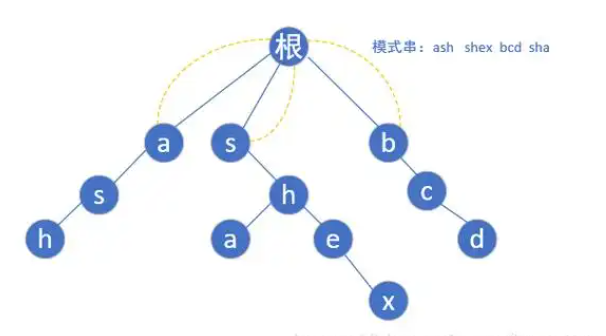在 Go 并发编程中,
context包是一个小而强大的工具,它帮助我们优雅地管理 Goroutine 的生命周期、传递请求范围的数据以及处理超时和取消操作。
一、Context 的设计哲学
1.1 为什么需要 Context?
在 Go 的并发模型中,我们经常遇到以下问题:
- 如何优雅地取消一系列关联的 Goroutine?
- 如何在多个 Goroutine 之间安全地传递请求相关的数据?
- 如何为操作设置合理的超时时间?
Context 正是为解决这些问题而生的标准解决方案。
1.2 核心设计理念
Context 的设计遵循了几个重要原则:
- 不可变性:Context 对象是不可变的,任何修改都会生成新的 Context
- 树形结构:Context 形成父子关系的树形结构,取消操作会向下传播
- 接口统一:通过标准接口与各种实现交互
二、Context 核心接口解析
type Context interface {
Deadline() (deadline time.Time, ok bool)
Done() <-chan struct{}
Err() error
Value(key any) any
}2.1 方法详解
- Deadline():返回 Context 的截止时间(如果设置了)
- Done():返回一个只读 channel,用于接收取消信号
- Err():返回 Context 被取消的原因
- Value(key):获取与 key 关联的值
三、Context 的创建与派生
3.1 基础 Context
// 通常用作根 Context
background := context.Background()
// 当不确定使用哪种 Context 时使用
todo := context.TODO()
3.2 派生 Context
3.2.1 WithCancel
ctx, cancel := context.WithCancel(parentCtx)
defer cancel() // 确保资源释放
// 在需要时调用 cancel() 取消操作3.2.2 WithTimeout
// 设置 2 秒超时
ctx, cancel := context.WithTimeout(parentCtx, 2*time.Second)
defer cancel()3.2.3 WithDeadline
// 设置绝对时间截止点
deadline := time.Now().Add(2 * time.Second)
ctx, cancel := context.WithDeadline(parentCtx, deadline)
defer cancel()3.2.4 WithValue
type ctxKey string
ctx := context.WithValue(parentCtx, ctxKey("userID"), "12345")
if userID, ok := ctx.Value(ctxKey("userID")).(string); ok {
// 使用 userID
}四、实战应用场景
4.1 HTTP 服务中的超时控制
func handler(w http.ResponseWriter, r *http.Request) {
// 设置整个请求的超时时间为 5 秒
ctx, cancel := context.WithTimeout(r.Context(), 5*time.Second)
defer cancel()
// 将 context 传递给下游处理
result, err := someLongRunningTask(ctx)
if err != nil {
// 处理错误
return
}
// 返回结果
w.Write([]byte(result))
}
4.2 并发任务控制
func processTasks(ctx context.Context, tasks []Task) error {
g, ctx := errgroup.WithContext(ctx)
for _, task := range tasks {
task := task // 创建局部变量
g.Go(func() error {
select {
case <-ctx.Done():
return ctx.Err() // 被取消时返回
default:
return task.Execute(ctx)
}
})
}
return g.Wait()
}
4.3 数据库操作超时
func queryUser(ctx context.Context, db *sql.DB, userID string) (*User, error) {
ctx, cancel := context.WithTimeout(ctx, 3*time.Second)
defer cancel()
row := db.QueryRowContext(ctx, "SELECT * FROM users WHERE id = ?", userID)
var user User
if err := row.Scan(&user.ID, &user.Name); err != nil {
return nil, fmt.Errorf("query user: %w", err)
}
return &user, nil
}
五、最佳实践与常见陷阱
5.1 最佳实践
1.Context 应该作为函数的第一个参数:
// 正确
func DoSomething(ctx context.Context, arg1, arg2 string) {}
// 错误
func DoSomething(arg1, arg2 string, ctx context.Context) {}
2.避免将 Context 存储在结构体中:
// 错误示范
type Client struct {
ctx context.Context
}
3.使用自定义类型作为 context key:
type ctxKey string
const requestIDKey ctxKey = "requestID"
ctx := context.WithValue(parentCtx, requestIDKey, "123")
4.总是检查 Done() 通道:
select {
case <-ctx.Done():
return ctx.Err()
case result := <-ch:
return result
}
5.2 常见陷阱
1.忘记调用 cancel 函数:
// 错误:可能导致内存泄漏
ctx, _ := context.WithCancel(parentCtx)
// 正确
ctx, cancel := context.WithCancel(parentCtx)
defer cancel()
2.滥用 context.Value:
- 仅用于传递请求范围的数据
- 不要用于传递函数参数或业务逻辑数据
3.阻塞操作不检查 Done():
// 错误:可能永远阻塞
result := <-ch
// 正确
select {
case <-ctx.Done():
return ctx.Err()
case result := <-ch:
return result
}
六、Context 的内部实现
6.1 取消传播机制
当调用 cancel 函数时:
- 关闭内部的 done channel
- 递归取消所有子 context
- 从父 context 中移除自己
6.2 性能优化
- done channel 的懒加载:
- 只有第一次调用 Done() 时才会创建 channel
- 减少不必要的内存分配
- valueCtx 的链式查找:
func (c *valueCtx) Value(key any) any { if c.key == key { return c.val } return c.Context.Value(key) }
七、总结
Context 是 Go 并发编程中不可或缺的工具,它提供了一种标准化的方式来:
- 管理 Goroutine 的生命周期
- 传播取消信号
- 处理超时和截止时间
- 安全地传递请求范围的数据
正确使用 Context 可以使代码更加健壮、可维护,并且能够更好地处理资源清理和超时控制。



